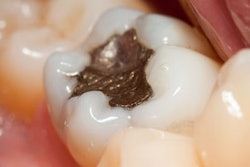The ADA has submitted comments to the U.S. Environmental Protection Agency (EPA) that it cannot support the agency's proposed rule requiring amalgam separators as written and has filed suggestions on how to eliminate areas of ambiguity and inconsistencies.
The proposed rule "incorporates many of the important principles required by the ADA for its support of a national rule," according to the organization.
The ADA supports a "reasonable national pretreatment standard for amalgam waste" and has filed comments with the EPA with specific suggestions on how to improve the proposed rule and "eliminate several areas of ambiguity and internal inconsistencies."
The ADA has long supported amalgam separators, a process which the group said is already widespread. In 2007, the ADA updated its best management practices for the disposal of dental amalgam waste to include the use of separators, collection devices installed in dental office plumbing to capture and remove at least 95% of solid waste particles before they enter the sewer system. The use of separators allows greater recycling and reduces the amount of amalgam entering wastewater treatment plants, the ADA said. Some states and municipalities already have separator requirements in place.
"Dental amalgam, a safe, affordable, and durable material with an established record of safety and effectiveness, is a mixture of metals, including silver, copper, and tin in addition to mercury," the ADA stated. Even without separators, 78% of dental amalgam is captured by chairside traps and vacuum filters, while 95% to 99% of the rest is captured by treatment plants. Very little -- less than 1% -- of the mercury released into the environment comes from dentistry, the ADA added.
The ADA said it will work with the EPA on crafting a "suitable and workable amalgam separator rule that balances protecting the environment and the concerns and needs of dentists and their patients."



















